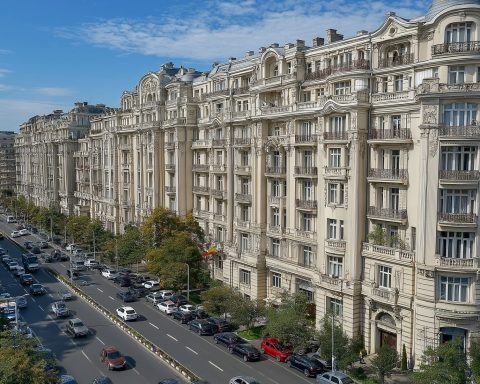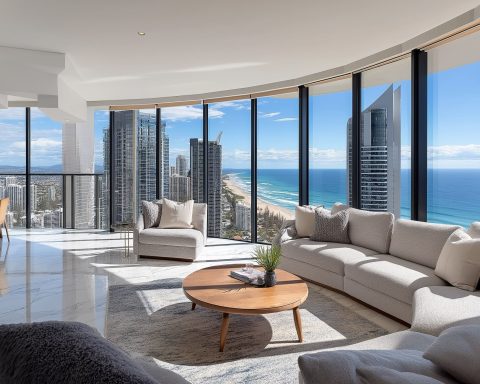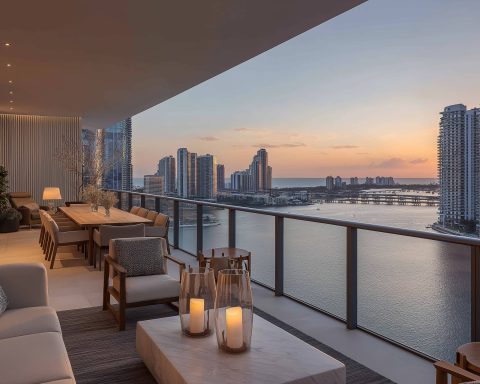Overview of the 2025 Market
Los Angeles’ real estate market in 2025 is marked by a mix of resilience and recalibration. Residential property values remain near record highs after the pandemic-era boom, albeit with much slower growth, while sales activity is rebounding modestly from the historic lows of 2022–2023. Commercial real estate performance is bifurcated – sectors like industrial and multifamily are holding strong, whereas office and some retail segments face headwinds from high vacancies and shifting demand. In short, 2025 finds L.A. in a balanced (even slightly buyer-favorable) housing market and a cautiously recovering commercial sector.
Economic and policy factors are exerting significant influence. Elevated mortgage rates (≈6.5–7%) have tempered buyer demand and stretched affordability to near record lows. New regulations – notably Measure ULA (“mansion tax”) on high-value sales – are cooling the luxury and investment property segment. Meanwhile, chronic supply shortages persist in housing, putting a floor under prices despite a recent population dip (L.A. city population fell ~2.5% since 2020). The following report delves into detailed trends for residential and commercial real estate in Los Angeles, analyzes neighborhood performance, highlights investment opportunities, and outlines forecasts through 2028.
(Citations note: Data and insights are drawn from sources including the California Association of Realtors, Zillow, Redfin, CBRE, and local market analyses, as cited throughout.)
Residential Real Estate Sector
Housing Prices and Sales Trends
Los Angeles home prices in 2025 are essentially flat to slightly up compared to a year ago, after the meteoric rise of 2020–2022. The median sale price in the city of Los Angeles is around $1.05 million as of mid-2025, a mere +0.5% year-over-year increase. In Los Angeles County, the median single-family home price in March 2025 was about $829,000, up ~3.0% from a year prior. This modest appreciation follows a brief dip in 2023, reflecting plateauing prices at near-record levels. (For context, the median home value in L.A. was about $600,000 in 2019, then surged to an all-time high near $956,000 by late 2024.) Figure 1 illustrates this price trajectory, with a sharp pandemic-era climb, a slight correction, and renewed gentle rise into 2025.
Sales volume is showing early signs of recovery from the slump induced by high interest rates. Home sales in 2023 were historically low – California’s total sales in 2023 fell to a multi-decade trough (down ~34% from 2021) – with Los Angeles experiencing similar declines. In 2024, sales ticked up slightly (the first annual increase in three years, +4.3% statewide), and 2025 continues this modest rebound, though volumes remain below pre-pandemic norms. For example, 1,617 homes sold in Los Angeles in May 2025, 7% fewer than May 2024 – indicating demand is still subdued. Inventory has improved from extreme lows: Los Angeles had 4,747 active listings in May 2025, an increase from earlier months. The unsold inventory index (months’ supply) in the L.A. metro is around 3.7 months as of March 2025, up from just 2.7 months a year prior. This balanced supply has shifted L.A. from a seller’s market to a more neutral market in 2025, easing the fierce competition of past years. Homes now take about 45 days on market, slower than last year’s 39 days, and price negotiation is more common (roughly 45% of sales in April 2025 closed below list price).
Key market stats (Residential, mid-2025):
- Median Sale Price (City of L.A.) – ~$1.05M (0%–1% YoY change).
- Median Sale Price (L.A. County) – ~$829k (+3.0% YoY).
- Homes Sold (City of L.A., May 2025) – 1,617 units (-7% YoY).
- Active Listings (L.A. County, May 2025) – ~4,700 (up from ~4,300 in Apr).
- Months’ Supply – ~3.5–3.7 months (up from ~2.6 months a year ago).
- Median Days on Market – ~45 days (was ~39 days last year).
- Sale-to-List Price Ratio – ~100% (half of homes sell at or below list).
Overall, residential prices are holding steady and even inching up in some segments thanks to limited supply and enduring demand. But the ferocity of the 2021 seller’s market has cooled – buyers have more breathing room as higher borrowing costs cap what they can afford. Indeed, housing affordability in L.A. is near record lows: qualifying for a median-priced home requires an income of ~$230,000, over 2× the California median income. This affordability crunch, combined with many homeowners locked into sub-3% mortgages (and thus reluctant to sell and trade up to a 7% loan), explains both dampened sales and low inventory – a stalemate that keeps prices from falling significantly. Barring a major economic shock, a gentle equilibrium seems to define L.A. home values in 2025.
Rental Market Trends
Los Angeles remains one of the priciest rental markets in the nation, though rent growth has moderated in 2024–2025 after a post-pandemic surge. The average rent for an apartment in L.A. is roughly $2,750–$2,800 per month as of early 2025. According to CBRE, the overall average multifamily rent in L.A. County was about $2,822/unit in Q1 2025, essentially flat (+0.1%) from the previous quarter. This follows a rapid climb: rents jumped about 23% in four years, from a $2,300 median in 2020 to ~$2,841 in 2024. Such increases outpaced wage growth and inflation, exacerbating affordability issues. By 2024, 74% of L.A. apartment listings were asking over $2,100 per month, pushing many renters to double up or relocate.
In 2025, rent growth has essentially plateaued – a welcome relief to renters. Some metrics even show slight declines in real terms: for instance, Los Angeles retail-focused analysis noted rent growth of -0.4% year-over-year in Q1 2025 for retail properties, indicating landlords’ limited pricing power in some sectors. For residential rentals, surveys have found asking rents fairly stable or up only marginally (~+1% YoY) in early 2025. High rents, combined with pandemic-era outmigration, have softened demand just enough to cap further spikes. Notably, L.A.’s population decline (down ~0.65% in 2024) means landlords face slightly less competition for tenants, leading to more incentives and tenant-friendly pricing in some areas.
Meanwhile, vacancy rates for multifamily remain low, as those who left L.A. are offset by those unable to buy homes. The occupancy rate in L.A. apartments was 95.4% in Q1 2025 (vacancy ~4.6%), a very slight improvement from late 2024. In practical terms, quality rentals still lease quickly, but renters have more options than a year ago. Concessions (like free month rent) are making a comeback in some submarkets. According to USC’s Casden Multifamily Report, effective rents are expected to stay near current levels in 2025 as new deliveries (roughly 6,000–8,000 units permitted in L.A. last year) try to catch up with demand.
Rental Hotspots and Trends: High-end luxury rentals in Westside and Downtown have faced some pressure due to new supply and remote-work vacancies, whereas more affordable neighborhoods still see fierce competition. Suburban areas in the San Fernando Valley and San Gabriel Valley saw modest rent gains year-over-year, as families seek relatively cheaper options inland. In contrast, prime areas like Santa Monica and Downtown L.A. saw rent drops and higher vacancy (Downtown retail vacancy spiked to 9.5%) as residents and retailers alike weigh costs versus benefits. Overall, L.A.’s rental market in 2025 can be characterized as stable but straining: rents aren’t spiraling higher for now, yet the city’s rent levels remain punishingly high for the average household (the typical 2-bedroom rental cost is ~70% higher than purchasing that unit with a pre-2022 mortgage, reflecting how out-of-reach homeownership is for many).
High-Growth vs. High-Risk Neighborhoods
Real estate is intensely local in Los Angeles, with neighborhood trajectories diverging markedly. Over the past decade, formerly overlooked areas have seen explosive growth in property values, while some traditionally expensive enclaves logged modest gains (or even stagnation recently). An analysis of county assessor data (2016–2024) reveals that the highest appreciation occurred in up-and-coming neighborhoods – often those undergoing gentrification or infrastructure booms. For example, West Adams (central L.A.) tops the charts with a 107% increase in assessed residential values since 2016. Once relatively affordable, West Adams has been transformed by its location near transit lines and spillover demand from adjacent pricey areas, turning into L.A.’s “hottest” market. Other high-growth areas include Elysian Valley (“Frogtown”) +86% and Exposition Park +84% (boosted by development around USC and the Banc of California stadium). Historically Black neighborhoods like Leimert Park (+79%) and Baldwin Hills/Crenshaw (+81%) have also seen tremendous appreciation as buyers seek (formerly) lower-cost options in the city’s core. These gains often coincide with new investment and demographic shifts – but also raise concerns about displacement of long-time residents xtown.la xtown.la.
In contrast, “high-risk” neighborhoods from an investment standpoint tend to be those facing either pricing bubbles or local distress factors. One example is Downtown Los Angeles (DTLA), which boomed in the 2000s and 2010s but is now struggling with elevated vacancy and quality-of-life issues. DTLA’s property values rose a relatively low ~45% over 8 years (lagging the county average), and retail/office vacancies in Downtown are high (retail ~9–10%, office over 30% vacant) – signaling risk for investors until an urban revival takes hold. Luxury coastal markets are another “risk” category: not in terms of collapse, but in slower growth prospects. Ultra-expensive areas like Bel Air (+61% since 2016) or Calabasas (+36%) have “less room to rise” because they started so high. Indeed, some affluent markets saw slight price declines in 2023 as buyer demand for mansions cooled under new taxes and economic uncertainty. For instance, Culver City’s median price fell ~6.7% YoY by May 2025, and Culver City and Santa Monica also witnessed population dips of ~3% recently. These areas aren’t risky in the sense of impending crash, but their ROI may underperform emerging neighborhoods.
Also notable are pockets of distress in the far suburbs and fringe communities. In places like northern L.A. County’s Antelope Valley (e.g. Lancaster, Palmdale), prices shot up during the pandemic as remote workers sought space, but they remain sensitive to gas prices and employment trends – a potential volatility risk if the economic winds change. The highest foreclosure rates in 2024 were seen in more remote or working-class areas; for example, Sylmar (in the San Fernando Valley) recorded 59 foreclosures, the most of any L.A. area last year. A cluster of foreclosures can signal local stress (and also an opportunity for bargain hunters to buy, rehabilitate, or rent out homes in those neighborhoods). Investors might eye such areas cautiously: High-risk neighborhoods for price declines are generally those with less diversified demand and higher exposure to economic swings, such as exurban communities or places with persistent crime or infrastructure challenges.
Takeaway: Neighborhoods like West Adams, Mid-City, and Jefferson Park – rich in transit access and historic homes – are booming, whereas Downtown and some luxury pockets have cooled. As always, “location, location, location” applies: even in a broadly expensive market, micro-markets with new development, cultural cachet, or upcoming transit (e.g. along the Crenshaw/LAX rail line, or around the new SoFi Stadium in Inglewood) will likely continue outpacing the overall market. Conversely, investors should vet local fundamentals carefully, as some areas carry higher risk of price corrections or weak rental demand if economic conditions shift.
Commercial Real Estate Performance
Commercial Market Overview
Los Angeles’ commercial real estate in 2025 is a story of divergent trajectories across property types. Industrial and multifamily properties remain robust, buoyed by e-commerce, trade, and housing shortages, while the office sector is grappling with a secular downturn in demand. Retail real estate sits in between, with neighborhood shopping centers proving resilient but urban retail (especially Downtown) recovering slowly from pandemic-era setbacks. Overall investment activity in commercial properties has been dampened by higher interest rates and local transfer taxes, but well-leased assets in prime locations still attract interest due to L.A.’s huge economic base. Below we break down performance by sector:
Office Sector: High Vacancies and Repurposing Challenges
Los Angeles’ office market is under significant strain in 2025. The rise of remote/hybrid work, coupled with corporate belt-tightening, has led to 11 consecutive quarters of negative absorption and surging vacancies. County-wide, the office vacancy rate has climbed to ~24.5% in Q1 2025 – an extremely high level historically – with Downtown L.A. worse off at over 31% vacant. Even prime submarkets are affected: for example, Century City’s vacancy hit 13% and Orange County’s office vacancy jumped to 19.2% in Q1 2025, roughly double from five years ago. The glut of space comes as tenants shrink footprints and new construction from the last cycle adds supply. Many landlords are facing anemic demand; net absorption was negative -1.08 million sq.ft. in Q1 alone in greater L.A..
As a result, office rents have stagnated or begun to slip. Market-wide asking rents average ~$3.60/sf per month (full service) – roughly flat year-over-year. Landlords are offering increased concessions (free rent, TI allowances) to lure tenants. The top-tier Westside markets still command premium rents (West L.A. averages $5.14/sf/mo asking), but even there rent growth is muted. Given the headwinds, analysts anticipate distress and repurposing opportunities to rise. Indeed, some Class B/C office buildings in Downtown and parts of the San Fernando Valley are trading at deep discounts for potential conversion to apartments or creative uses. The outlook for L.A. office is cautious: high vacancy is likely to persist through 2025 – one report forecasts office distress to materialize in 2025 as owners with maturing loans face refinancing hurdles. Any recovery hinges on job growth in office-using industries and how companies settle long-term workspace strategies. In the meantime, expect the office sector to be L.A.’s weakest link, with certain buildings (especially older stock in oversupplied areas) at high risk of value decline.
Retail Sector: Slow Recovery and Adaptive Trends
Los Angeles’ retail real estate is gradually finding its footing post-pandemic, but the picture is mixed. Consumer spending has rebounded and tourists are returning, yet structural challenges (e-commerce competition, shifting consumer habits) persist. The overall retail vacancy in L.A. County stood around 6.1%–6.5% in Q1 2025, a fifth consecutive quarterly rise. That vacancy rate, while up, is still moderate and below many other metro areas. High-street retail and malls have higher vacancies, whereas grocery-anchored centers in suburbs perform better. Market asking rents for retail average about $36–$37 per sq.ft. per year (roughly $3.05/sf per month triple-net), which is ~40% above the U.S. average. However, rent growth is slightly negative: L.A. retail rents fell 0.4% YoY in early 2025, reflecting landlords’ need to retain and attract tenants. In fact, Los Angeles lost about 2.4 million sq.ft. of occupied retail space over the last year – a sign of contractions and closures outpacing new store openings.
Neighborhood disparities: Prime shopping districts like Beverly Hills’ Golden Triangle and Santa Monica’s Third Street are recovering but not yet at full pre-pandemic vibrancy (some luxury retailers downsized). Downtown L.A.’s retail has been hard-hit – the downtown retail vacancy jumped 250 bps to 9.5% by late 2024 as foot traffic and tourism were slow to fully rebound. Conversely, suburban retail in growing residential areas is relatively strong. Submarkets in the San Fernando and San Gabriel Valleys even saw slight rent increases as value-focused retailers (discount chains, grocers) expanded to serve growing populations. Retail investment sales are occurring below peak values, indicating repricing: for example, a retail center on La Brea traded in 2025 for 35% below its 2016 price due to NOI declines. Cap rates for retail have risen to around 5.5%–6% on average, the highest in a decade, as investors demand better yield in a higher-rate environment and price in risk.
The retail sector’s outlook is cautiously optimistic. Stabilizing vacancy and foot traffic suggest the worst is over, but growth will be slow. Key trends include experiential retail (dining, entertainment concepts like the planned West Harbor in San Pedro opening 2026) and adaptive reuse (converting struggling retail into mixed-use or industrial). Developers are very selective – only ~650,000 sq.ft. of retail space is under construction in L.A., a mere 0.1% addition to inventory. This lack of new supply, combined with the region’s population base, means well-located retail should hold value. Yet owners must innovate (e.g. add services, medical offices, or residential components) to fill vacant storefronts. In summary, L.A. retail in 2025 is stable but evolving: expect incremental improvement in occupancy, flat rents, and continued transformation of underperforming centers.
Industrial Sector: From Record Highs to Slight Cooling
The industrial real estate sector in Los Angeles has been a star performer in recent years, fueled by port activity, logistics, and lack of developable land. Even as of 2025, industrial properties are in high demand, though the frenzy has cooled slightly from its peak. After hitting all-time low vacancies (~2–3%) during 2021–22, the industrial vacancy rate in L.A. County has ticked up to about 4.9% – the highest in nearly a decade. This rise in vacancy (up ~140 basis points YoY) is attributed to 10 consecutive quarters of occupancy losses as some tenants downsized and a bit of new supply came online. Still, a 4.9% vacancy is very tight by historical standards – essentially full occupancy in many submarkets. In fact, all six industrial submarkets in L.A. County still have sub-6% vacancy, and half of them are sub-4%. The slight increase in availability (overall availability ~6.5% including space under marketing) suggests that lease rates might face pressure in the short term.
Indeed, industrial rents skyrocketed during the pandemic (by some estimates, up 50%+ since 2019) and are now undergoing a mild correction. L.A. industrial asking rents have declined for six straight quarters through Q1 2025, as the market digests those earlier jumps. For perspective, average asking rents for warehouse/distribution space in the Los Angeles market (one of the nation’s most expensive) are still roughly $1.20–$1.50 per sq.ft. per month (triple net) depending on location – far above pre-2020 levels. But tenants have a bit more leverage now than a year ago. Despite this dip, industrial landlords remain confident; any rent declines have been modest, and the long-term demand drivers (the massive Ports of LA/Long Beach, e-commerce distribution needs, last-mile logistics for 10+ million residents) remain firmly in place. The South Bay and Inland Empire submarkets, in particular, continue to attract warehouse users, though even the Inland Empire’s vacancy has crept up off record lows.
In terms of investment, industrial properties are still highly prized, but rising interest rates have caused cap rates to inch up. Average industrial cap rates in SoCal have moved into the low-5% range (around 5.3% in 2024, up from sub-4% in 2021). Some smaller or class B industrial deals now pencil out closer to 6%–6.5% cap rates, especially if they have shorter lease terms. Investors remain focused on core distribution corridors – however, Measure ULA’s tax in the City of L.A. (which hits sales >$5M) has somewhat frozen large industrial sales in city limits. This may push more investment to nearby cities without the tax.
The industrial outlook is guardedly positive. Experts anticipate that 2025 may mark the bottom for occupancy losses, with stabilization by 2026 as supply additions slow and businesses adjust. Rent growth could resume by 2026 after this period of slight decline. One risk factor on the horizon is trade policy – the surge of imports in late 2024 (to beat new tariffs) boosted port warehouse demand temporarily, but any sustained trade war or economic slowdown could dampen port volumes. On the flip side, any resolution of West Coast labor disputes or an economic re-acceleration would tighten the market again. In sum, L.A.’s industrial sector remains fundamentally strong (low vacancy, high rents), with 2025 being a year of normalization from extreme conditions. Well-located distribution and storage facilities in L.A. are expected to retain value and see continued investor interest given their critical role in supply chains.
Policy and Regulation Updates
Multiple policy and regulatory developments in recent years are impacting Los Angeles real estate in 2025:
- Measure ULA (“United to House LA” Mansion Tax): Implemented April 2023, this city of L.A. measure imposes a 4% transfer tax on property sales over $5 million (5.5% over $10M). The goal is to fund affordable housing, but it has significantly affected transaction volume at the high end. In the year since, luxury home sales slowed sharply and many commercial deals were put on hold or rerouted (e.g. selling entity stakes rather than the property) to avoid the tax. Revenues raised (about $480 million through end of 2024) fell short of initial projections, partly because sales plunged in response. Measure ULA’s impact is a double-edged sword: fewer mega-deals mean less market liquidity, potentially softening prices for luxury homes and big commercial assets in the city. There is ongoing debate and even legal challenges, but for now, investors must factor in this hefty cost for L.A. deals – a clear dampener on flipping high-value properties.
- Rent Control and Tenant Protections: The City of Los Angeles has one of the nation’s strictest rent control ordinances (covering older multifamily units), and California’s statewide rent cap (AB 1482) limits rent increases to ~10% max. per year for many other units. During COVID, L.A. also enacted eviction moratoria that only fully lifted in early 2023. In 2025, landlords now face new regulations requiring relocation assistance for sizable rent hikes and just-cause eviction rules for more properties. These measures, while providing tenant stability, also influence investment returns: rental cashflow growth is capped, making L.A. less appealing to aggressive investors but favoring long-term holders. On the flip side, passthrough allowances for inflation (under rent control) did permit modest 3–4% raises this year as inflation ticked up. Overall, policy momentum in L.A. is toward strong tenant protections, which could slow rent escalations but also keep rental vacancy low (tenants stay put).
- Zoning and Housing Supply Reforms: In response to the housing affordability crisis, California passed laws like SB 9 (lot splits) and SB 10 to enable more small-scale density. Los Angeles incorporated these into its planning, meaning homeowners in many areas can more easily add ADUs (granny flats) or split a single-family lot to build a duplex. Thus far, uptake is moderate, but these reforms are gradually adding units. L.A. City’s new Housing Element set an ambitious goal of adding 456,000 housing units by 2029. To facilitate this, the city is rezoning areas for taller mixed-use development (especially near transit). However, as of 2024, L.A. is far off pace, with only ~8,600 units permitted in 2024 (the lowest in a decade for apartments). Expect continued policy focus on upzoning and streamlining development approvals – e.g. downtown L.A.’s Adaptive Reuse Ordinance expansion – to spur more housing construction. For investors and developers, a more permissive zoning environment could open opportunities (conversions, infill projects), albeit tempered by community resistance in some neighborhoods.
- Interest Rates & Financing: While not a local policy, the Federal Reserve’s rate hikes dramatically affect L.A. real estate. Mortgage rates near 7% have been the primary brake on homebuying. The latest forecasts suggest rates may gradually ease by late 2025 (toward the high-5% range). Any such decrease could reinvigorate sales and price growth – conversely, if inflation keeps rates high, the market may stay subdued. On the commercial side, higher rates have repriced assets (higher cap rates) and made financing projects costlier. Life companies and banks have pulled back on office lending in particular. Policymakers are monitoring the commercial debt market, but no specific relief is in place; thus, refinancing risk is a key 2025–2026 concern for owners.
- Affordable Housing and Development Fees: L.A. continues to expand inclusionary housing requirements and developer fees to fund affordable units. Some new developments must set aside a percentage of units for low-income households or pay linkage fees. Additionally, the city and state are offering incentives for affordable housing – such as density bonuses and streamlined approvals under SB 35 for compliant projects. These policies aim to incentivize mixed-income communities, though developers often cite them as constraints on profitability. There’s also attention on homelessness and adaptive reuse: state laws now ease converting motels or offices to homeless housing, and Measure ULA funds are intended to accelerate such projects (though deployment has been slow).
In sum, the policy landscape in L.A. is tilted toward housing affordability and tenant rights at the potential expense of short-term investor profits. Savvy investors will need to navigate transfer taxes like ULA, abide by rent caps, and possibly partner with public programs to seize incentives. For homeowners, zoning liberalization (ADUs, etc.) is a perk that can add value via rental income. And broadly, macroeconomic policy (Fed interest rates) remains the wildcard that will influence how quickly L.A.’s real estate markets pick up momentum in coming years.
Investment Opportunities and ROI Expectations
Despite high prices and new taxes, Los Angeles real estate still offers a range of investment opportunities. The key is to align strategy with market realities – favoring sectors with strong demand tailwinds and being mindful of regulatory constraints. Here are some avenues for investors in 2025 and their ROI outlook:
- Value-Add Residential (Single-Family & Small Multi-Units): With inventory tight and many homes older, investors can find fixer-uppers in growth neighborhoods to renovate and either flip or rent. Neighborhoods like West Adams, Leimert Park, and Highland Park – which have seen huge appreciation – continue to attract investors who rehab properties to meet gentrifier demand. ROI Expectation: Flips can still fetch healthy profits (10–20% ROI) if bought below market, but days of rapid 30%+ run-ups are gone. Rental yields on single-family homes in L.A. are modest (~3–4% cap rates typically), but adding an ADU can boost cash flow. Measure ULA means flippers must be careful on high-end deals in the city (the tax can wipe out profit on a narrow-margin flip over $5M). Overall, long-term appreciation remains the main reward in these neighborhoods – historically around ~5–7% annually in hot spots, which, combined with leverage, can produce solid returns.
- Multifamily Apartments: Apartment buildings are a cornerstone of L.A. investing. Occupancy is high (~95%) and rents, while plateaued, are at record levels, ensuring steady income. Smaller 2–4 unit properties also let investors sidestep some rent control rules if owner-occupied. ROI Expectation: Cap rates for L.A. multifamily average ~4.5%–5.0% as of 2024, having risen from ~4% a couple years ago. That means an investor’s unlevered return is ~5%. With financing, one can enhance returns if debt is cheap – but at current 6+% interest, cash-on-cash returns may be thin initially. The real play is long-term appreciation and rent growth. Given chronic housing undersupply, apartment values are likely to keep rising (LA apartments appreciated ~60% on average 2016–2024). Adding value through renovations to increase rents (within allowed limits) can bump yields. Investors should, however, budget for new regulations (e.g. seismic retrofits, stricter eviction rules) which add to costs. In summary, expect mid-single-digit annual returns from income plus the potential for property value gains that historically have ranged 3–6%/year – making multifamily a stable, if not explosive, investment.
- Industrial Warehouses: Industrial is arguably the most attractive commercial asset in L.A. from a fundamentals standpoint. Vacancies are low and every major retailer and logistics firm needs distribution space in L.A. County to serve the population. ROI Expectation: Industrial cap rates ~5–5.5%, with well-leased properties in core locations (close to ports or city center) trading even below 5%. These are lower yields than elsewhere in the country, reflecting investor confidence in rent growth and stability. And historically, they’ve been right – industrial rents jumped dramatically in the past few years (50%+ above pre-pandemic). There may be a short-term lull, but projections show industrial demand outstripping supply long-term, suggesting continued rent appreciation. Total returns could reach high-single digits annually when combining that rent growth and yield. Key opportunities include older industrial sites that could be repositioned for modern logistics (high-clearance warehouses) or first-mile distribution centers near the city. Also, last-mile infill sites (even small warehouses) in L.A. command premium rents and can be lucrative if you can acquire at a reasonable basis.
- Retail Centers: With retail at an inflection point, savvy investors can target necessity-based retail (e.g. shopping centers with grocery, pharmacy, services) which in L.A. have proven resilient. ROI Expectation: Retail cap rates are now around 5.5–6% on average, higher for properties with vacancy or in secondary locations. If you buy a well-located center at a 6% cap and can lease any empty space, you not only get that income but also upside as the property’s value could increase (cap rate compression if the market improves, plus NOI growth). Returns north of 10% annually are possible for value-add retail investors who execute well (for instance, by re-tenanting a center with better mix or adding uses). However, pure passive investors in retail should temper expectations: stabilized prime assets might deliver 6–8% total returns (income plus minimal rent growth). Net-leased retail (like drugstores or fast food with long leases) offers ~5% caps in L.A. – essentially bond-like streams – which may appeal for their stability. One caution: retail is very location- and management-sensitive; misjudge an area’s demand and ROI can suffer. But overall, as consumer behavior normalizes post-COVID, retail assets in dense L.A. trade areas present solid cash yields and moderate appreciation potential.
- Office and Specialized Assets: Office is the contrarian play – values are down, and distress is looming, meaning opportunistic investors can hunt for bargains. We may see office buildings in L.A. trade at fractions of their replacement cost, especially if lenders auction off loans. ROI Expectation: High risk, high reward. One strategy is to acquire a distressed office tower (perhaps at a 8%+ cap rate or 50% discount) and convert it to alternative use (residential, hotel, creative studio space). The ROI on a successful conversion could be very high (IRRs >15%). But execution and regulatory hurdles are significant. Traditional office leasing investments are riskier – without a clear path to raising occupancy, one could be catching a falling knife. Life science facilities and studio soundstages are two specialty asset classes in L.A. that remain in demand. Investors in those spaces (often conversions of office/industrial) can see healthy returns as Hollywood content production and biotech research grow; cap rates in those niches are in the 5–7% range with good growth prospects.
- Development and Land: Building in L.A. is not for the faint of heart, but there are opportunities in niche development. For instance, small-lot subdivisions, infill condo projects, or ADU developments can yield profits due to high end-sale prices. The city’s push for housing supply means affordable housing developers can leverage tax credits and new programs – effectively getting subsidies that improve ROI while addressing a market need. ROI Expectation: Development in L.A. typically aims for ~15–20% profit margins given the risk. With construction costs still high, a lot of projects only pencil if they achieve premium pricing (or if land was acquired cheaply earlier). That said, entitled land in L.A. is incredibly valuable, and land banking in growth areas (near future transit lines, etc.) can pay off big, albeit on a longer time horizon.
In summary, Los Angeles remains an “investor’s paradise” long-term, thanks to its huge demand-supply imbalance. As the report by Apartment News notes, high demand and limited construction mean strong rental income potential and property appreciation over time. But in the near term, investors should adjust return expectations: leverage isn’t as accretive with high interest rates, and quick flips are riskier in a flat market. Core properties (industrial, fully leased multi-family) will deliver stable, modest returns. Value-add plays (renovations, lease-up strategies) can still achieve double-digit returns if one navigates the regulatory climate wisely. And for speculators with patience and capital, picking up distressed assets in 2025–2026 could yield excellent returns by 2028 if/when the market cycle turns up again.
Forecasts 2026–2028: Outlook and Risks
Looking ahead, forecasts for Los Angeles real estate suggest a period of continued moderate growth – a “soft landing” scenario – assuming no major shocks. After the rollercoaster of the early 2020s, both industry analysts and economic models foresee price trajectories flattening out in the near term, then rising gradually through 2028. Here are key points from forecasts:
- Home Price Forecasts: Zillow’s latest forecast for the L.A. metro (Los Angeles-Long Beach-Anaheim) projects only a +0.4% increase from Feb 2025 to Feb 2026. Essentially, home values are expected to be stable over the next year. This includes a possible slight dip in mid-2025 (their model showed -0.1% to -0.2% in spring) followed by a modest rise later. Beyond 2026, most experts anticipate low single-digit annual appreciation (on the order of 2–5% per year) for L.A. home prices through 2028. This would be a far cry from the double digits of 2021, but also avoids any steep correction. Supporting this outlook: high demand, limited supply, and a strong local economy should underpin prices. C.A.R.’s official 2025 forecast called for a ~+4.6% rise in California’s median price managecasa.com, but that was before rates stayed elevated; likely, the new normal is a gentler climb. By 2028, Los Angeles median prices could be roughly 10–15% higher than today if these trends hold. Risk scenario: If a recession hits in 2026 (for instance, due to Fed over-tightening or global shocks), L.A. could see temporary price declines of perhaps 5–10% as sales dry up – but a 2008-style crash is not expected given the lack of over-leverage and the persistent housing shortage.
- Sales and Volume: Home sales volumes are projected to improve as we move into 2026–2027, assuming mortgage rates ease. Many forecasters see rates dipping to the 5% range by 2026, which would unlock pent-up move-up buyer demand. Thus, 2026 and 2027 could see a rebound in sales (possibly returning to 2019 levels). With more transactions, price growth could accelerate a bit from the anemic 2025 pace. However, if rates stay high or credit tightens, sales might remain sluggish. In any case, inventory is not expected to flood the market, so any increase in demand tends to translate to upward price pressure in L.A.
- Rents and Multifamily: Rental forecasts (e.g., USC Casden) anticipate L.A. rents rising a few percent per year through 2028, roughly tracking inflation. Vacancy may rise slightly as more apartment projects complete (L.A. has thousands of units under construction), but not enough to seriously soften rents. By 2028, average rents could be perhaps 10–15% higher than today, exacerbating affordability unless incomes keep up. One wildcard: statewide efforts at renter assistance or expanded rent control could cap rent growth artificially. Also, if remote work enables more outmigration, demand for rentals might cool. But given L.A.’s huge population and ever-so-slow building pace, moderate rent increases are a fair base-case expectation.
- Commercial Sectors:
- Office: The general consensus is that office will recover very slowly. Vacancy might continue rising into 2025–26 as leases expire, then potentially stabilize by 2027 as obsolete stock is removed (converted or foreclosed). Rents likely stay flat or decline further in the interim. By 2028, the office market could bifurcate – newer, amenitized offices back to healthy occupancy, old commodity offices repurposed or valued much lower. Investors should be wary: some forecasts (e.g. Moody’s) predict office values could fall another 10–20% before bottoming around 2024–2025, with only a mild uptick by 2028.
- Retail: Expect a continued gradual recovery. Retail vacancy in SoCal is actually forecast to decline slightly by 2026 as economic growth and population gains resume. Rents may inch up ~1% annually in prime centers. The biggest risk to retail is a consumer spending slowdown if there’s a recession; otherwise, the next few years look stable, not dramatic.
- Industrial: Most projections show industrial demand roaring back by 2026. After the current slight equilibrium, port volumes and e-commerce are slated to grow. CBRE and Cushman & Wakefield outlooks see L.A. industrial vacancy potentially falling back toward 3–4% by 2027, with rent growth resuming in the mid-single digits annually post-2025. The risk here is on the supply side: a lot of new logistics development occurred in the Inland Empire; if that saturates demand, rent growth could underperform. But within land-constrained L.A., existing industrial assets should fare exceedingly well long-term.
- Macro Risks: A few overarching risks could derail these tempered positive forecasts. Economic recession is the top concern – if the U.S. enters a significant downturn in 2026, L.A. could see job losses in entertainment, tech, trade, etc., hurting both housing and commercial demand. Unemployment rising would put pressure on home prices (likely through reduced sales rather than foreclosures, since homeowners have equity and low rates). Interest rate swings are another: an unexpected spike in rates (say inflation surges again) would further erode affordability, possibly forcing prices down somewhat. Conversely, a faster rate drop could overheat the market again by 2027 (a risk for renewed price bubbles). Policy changes also loom: for instance, if Measure ULA is repealed or watered down by 2026, there could be a surge of pent-up high-end sales; or if California passes aggressive new taxes or rent regulations, investor sentiment might dampen. Natural disasters or climate events (earthquakes, wildfires) unfortunately remain a background risk in L.A. as well, potentially impacting specific locales or insurance costs statewide.
Bottom Line Forecast: The most likely scenario through 2028 is slow but steady growth. By 2028, L.A.’s median home price could be roughly 10%–20% higher than 2025 levels, and rents perhaps 10% higher – marking a much gentler ascent than the previous decade, but upward movement nonetheless. The market’s floor is bolstered by enduring desirability (climate, jobs, culture) and underbuilding, while its ceiling is capped by affordability and policy. Barring a major shock, L.A. real estate should deliver solid, if unspectacular, returns in the next few years, with more risk on the upside missed (if you stay out) than a downside crash. Savvy stakeholders will monitor interest rates, embrace adaptive reuse and housing innovations, and focus on fundamentally strong locations to maximize gains in this new normal. L.A.’s boom times may pause, but its long-term trajectory as a global city remains firmly on the rise.
Sources:
- California Assoc. of Realtors – Market data and forecasts
- Zillow Research – Home value index & forecast
- Redfin – Los Angeles housing stats (prices, sales, inventory)
- Rocket Homes Market Report – L.A. median prices by segment
- Crosstown LA – Neighborhood value trends analysis
- L.A. Times & CoStar – Commercial market insights (office, industrial)
- Matthews/NAI Market Reports – Retail and industrial metrics
- RentalHousePM – L.A. rental and housing statistics
- UCLA Lewis Center – Measure ULA impact studies.







